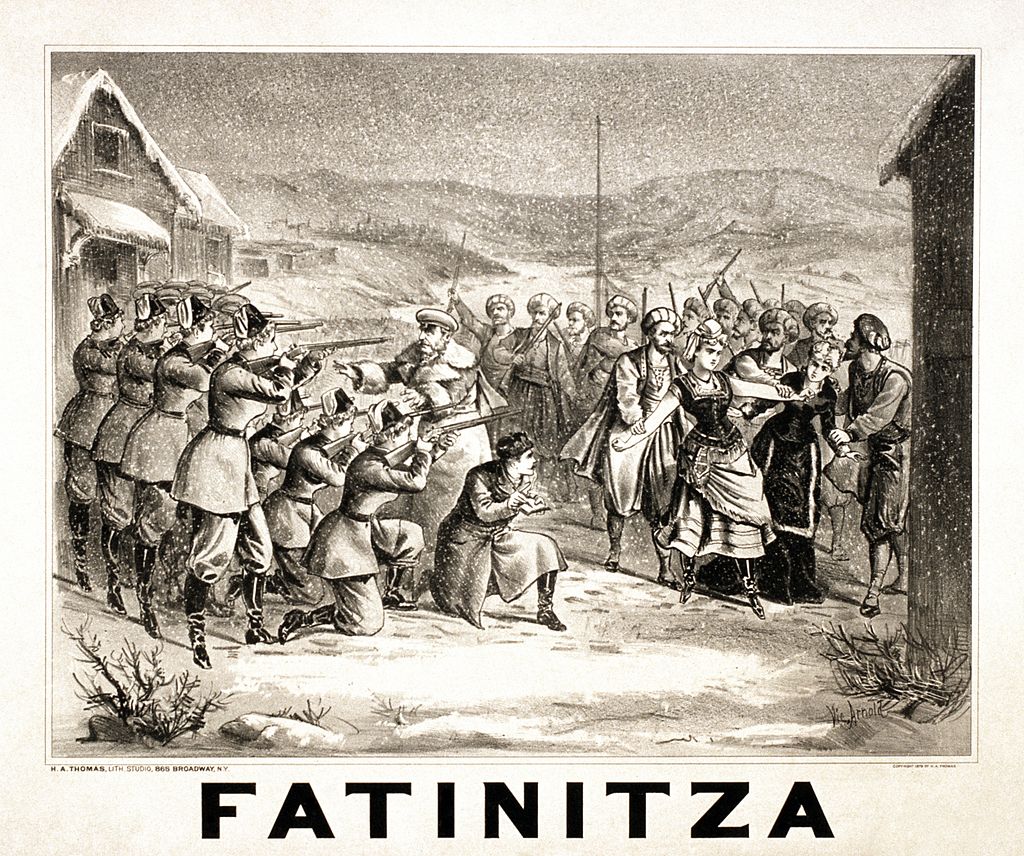N.N.
Operetta Research Center
4 August, 2014
The topic of cross-dressing in operetta – as well as anywhere else in life and theater – is a hot one. It might, in principal, be as old as operetta itself, but only very recently has it been rediscovered by the Gender Study people and the crusaders of Gay & Lesbian Studies as a topic way ahead of its time. Next month an exhibition called Mein Kamerad – die Diva (“My Comrade, the Diva”) at the Schwules Museum Berlin will examine theater performances in World War 1 military camps with all male casts. Among the shows is an all-male Gondoliers – yes, the Gilbert & Sullivan classic – in Ruhleben, at christmas 1917.

The “Gondoliers”, Ruhleben, christmas 1917 (Photo: Historical & Special Collections, Harvard Law School Library/Schwules Museum Berlin)
You might remember that not so long ago the Theatermuseum Munich issued a book entitled Ein Bild von einem Mann – gespielt von einer Frau (“a picture-perfect man – played by a woman”) which focused on women playing male roles. This catalogue edited by Susanne de Ponte did not single out operetta as a special point of interest but included the genre in the more general discussion. The new exhibition at the Schwules Museum takes the opposite look at cross-dressing, dealing with men in woman roles, and narrowing the topic down to WW1 performances.

Poster for Franz von Suppé’s “Fatinitza,” with the cross-dressed star on the right in harem outfit.
War time has always been a particularly rich period for cross-dressing. Just think of Franz von Suppé’s operetta Fatinitza (1876) where the lead character Wladimir Dimitrowitsch Samoiloff, Lieutenant of a Circassian Cavalry Regiment, dresses up as the beautiful Fatinitza for a theatrical performance in the barracks. The attending general, not knowing it’s a cross-dressed performer, falls madly in love with Fatinitza and persues her throughout Russia. (The joke being that Wladimir is played by a mezzo-soprano to begin with, so it is a triple cross-dressing entertainment.)
After WW2 there were all-male prisoner performances of shows such as Im weißen Rössl which are documented with photos.

The “White Horse Inn” in a Russian prisoners of war camp, 1946.

Cover of the book “Mein Kamerad – die Diva”, published by edition text + kritik.
And you will all remember movies such as Privates on Parade showing how the British treated their soldiers with cross-dressing spectacles. (You might also remember the “Honey Bun” sequence in Rodgers & Hammerstein’s South Pacific.)
The Berlin project opens on September 5, it will be accompanied by a book published by edition text + kritik, who already published the Munich catalogue.
For more details on the exhibition, click here.
